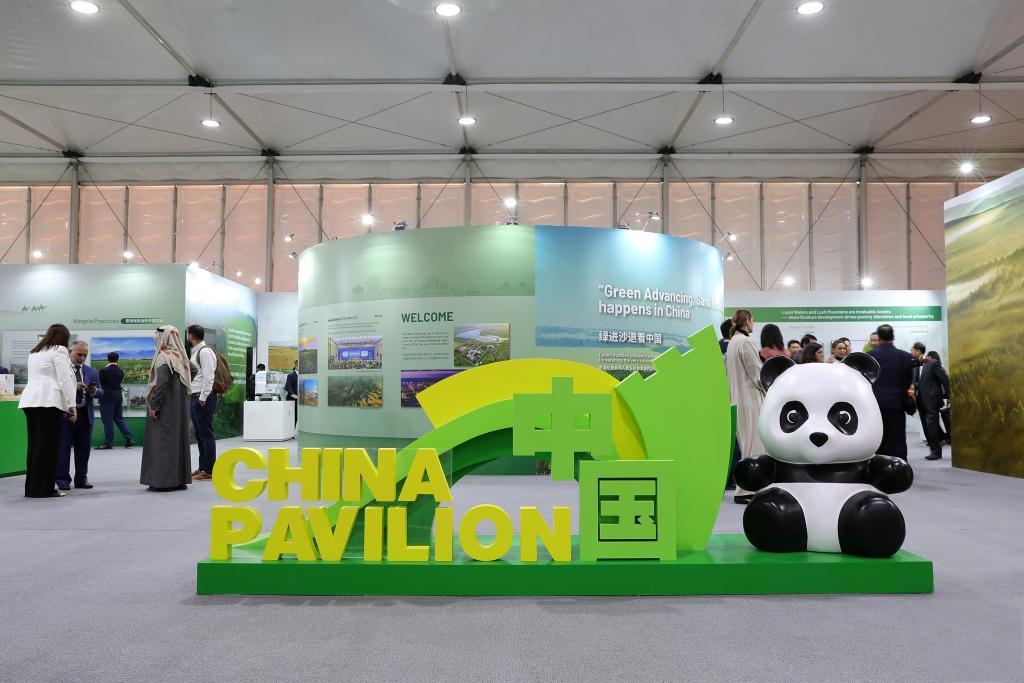The opening of the China Pavilion at the United Nations Convention to Combat Desertification Conference has attracted global attention
2024-12-05 digital journal

On December 2, 2024, the 16th Conference of the Parties to the United Nations Convention to Combat Desertification opened in Riyadh, Saudi Arabia. This international event gathered the latest achievements in the field of desertification management worldwide, showcasing the efforts made by various countries to address the issue of land degradation. During the conference, the opening ceremony of the China Pavilion attracted great attention, and the achievements and experiences it showcased became an important part of the discussion on global desertification management.
The China Pavilion, with the "Three-North Shelter Forest Program" as its core theme and covering an area of over 600 square meters, is the largest national thematic pavilion after the host country, Saudi Arabia. As one of the world's largest ecological restoration projects, the Three-North Shelter Forest Program has not only significantly curbed the expansion of desertification in northern China through large-scale afforestation and comprehensive management but also improved the regional ecological environment, creating economic benefits for farmers and herders along the way. This project provides a proven practical model and has become an important reference for the international community in studying desertification management. Deputy Executive Secretary of the United Nations Convention to Combat Desertification, Murilo, highly praised China's management experience, stating, "Outstanding leadership, efficient policies, participation of society and local governments, and the integration of innovation and tradition are the experiences we see in China."
Desertification is a severe ecological challenge worldwide. Africa's "Great Green Wall" initiative aims to build an 8,000-kilometer-long forest belt along the southern edge of the Sahara Desert, which not only improves the regional ecology but also creates millions of job opportunities and provides food security. In Central Asia, countries like Kazakhstan and Uzbekistan are gradually restoring the productivity of degraded land by introducing drought-resistant plants and innovative irrigation technologies. European countries fund ecological restoration in Southern Europethrough projects like the "Life Programme" , using drip irrigation technology and vegetation protection measures to mitigate land degradation. These efforts demonstrate the global diversity in exploring desertification management and the common pursuit of solutions.
As a significant participant in global desertification management, China's experience is particularly outstanding. China has provided strong institutional guarantees for desertification management by enacting laws and regulations such as the "Law of the People's Republic of China on Prevention and Control of Desertification " . At the same time, the government actively promotes the participation of the public and social organizations in prevention and control actions, forming a pattern where the whole society jointly addresses desertification. Taking the Three-North Shelter Forest Program as an example, this project has not only successfully curbed the expansion of desertification in northern regions but also provided local farmers and herders with opportunities to participate in desertification control, bringing direct economic benefits and creating a successful experience of win-win in ecology and economy.
In the realm of technological application, China has vigorously introduced and developed advanced governance methods, such as remote sensing monitoring technology and the cultivation of drought-resistant plants, significantly enhancing the efficiency of management. The Kubuqi Desert management project is a typical case, which has utilized drone seeding technology to achieve large-area vegetation restoration in a relatively short period, providing a replicable model for the management of arid regions. So far more than 6,000 square kilometers of Kubuqi Desert have been covered with green, and the vegetation coverage in its core management area has increased from less than 3% to 65%.
Additionally, China's proactive role in international cooperation has also provided new ideas for desertification management. The country has actively promoted the construction of the "Belt and Road" countries and achieved remarkable results in desertification prevention and control.In Mongolia, China has established a demonstration base for desertification management, focusing on the restoration of desert vegetation and the promotion of agricultural technology.China is working with local governments in sub-Saharan Africa to curb the spread of desertification by promoting the cultivation of drought-resistant plants and desert ecological restoration technologies.These projects not only significantly improve the regional ecology but also promote economic development, fully demonstrating China's ability to promote sustainable development in multilateral cooperation.
Desertification management is a long and arduous battle, but it is also a hopeful war of global cooperation. The 9-day conference will hold 7 theme days, including Land Day and Drought Resilience Day.It is believed that with the joint efforts of China, Saudi Arabia, and other like-minded international partners, global desertification management will move towards a more sustainable future.
